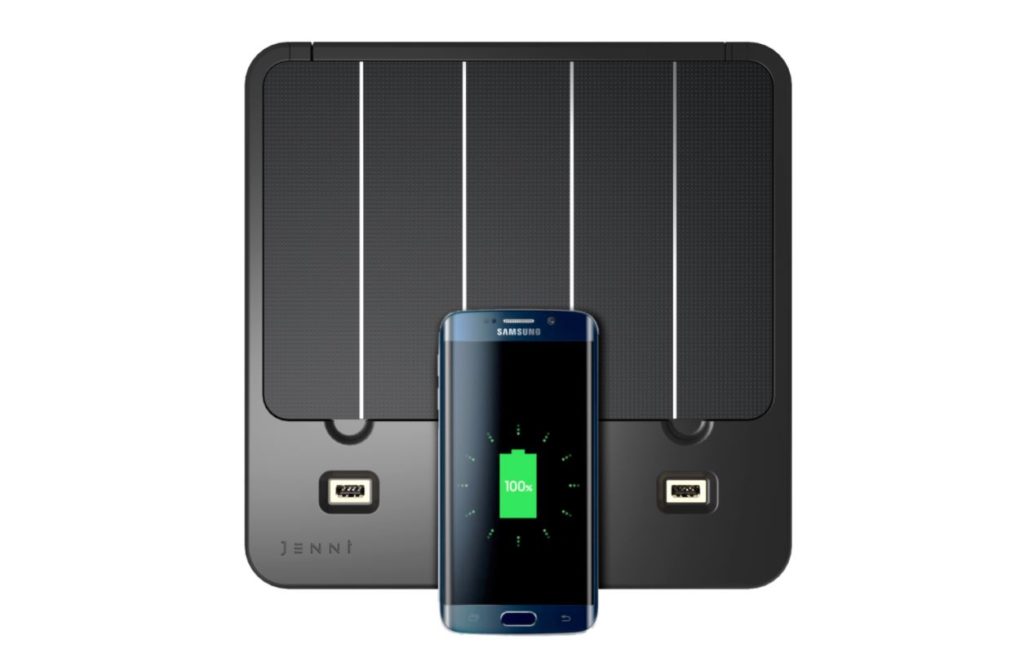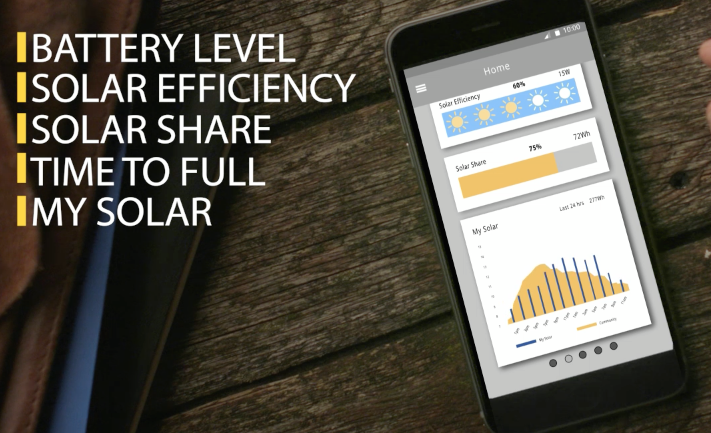
Better Current’s Jenni — a play on the word generator — is an introductory step to living a greener lifestyle, according to the company’s marketing campaign. The device utilizes the renewable energy of the sun to provide power to tablets, smartphones and even MacBook products, for under $500 CAD.
In an interview, Better Current’s co-founder Colin Campbell explained that the idea for Jenni came from his desire to harness solar energy while living in an apartment in downtown Toronto.
With the help from co-founder John Wilson, who was already harnessing solar energy, they developed a product for using renewable energy at an introductory level.
Jenni, which Better Current is marketing as the world’s first smart solar charger, won’t save you a lot of money, nor will it radically change your global footprint, but it’s a good place to start.
“Someone who starts with a Jenni solar charger for their consumer electronics today, we’ll see that person ten years from now when they move out of their condo and when they are moving into their home, incorporating much more substantial solar energy into their life,” said Campbell.
How to use Jenni

Jenni’s setup process only has a few steps.
First, place the 20 watt solar panel on a window, with the panel facing outwards. It’s worth noting that the inside of the panel offers a space to put pictures or even a whiteboard.
Afterwards, place the hub on a surface around 10 to 15 feet away, connecting it to the panel and a wall outlet. It can then be used to start charging up to six devices. The hub has docks for USB-C and USB-A products, as well as an area for products that use Qi wireless charging — like the iPhone X.
In terms of battery, the hub can hold 120 watts of power, stored at 12 volts, which Campbell assures me on average can “charge your phone ten times.”
At this point, however, you may be wondering why the hub needs to be plugged into a wall outlet in addition to the solar panel.
Jenni uses both solar energy and electric power.
Jenni utilizes the power of the sun and the grid

Managing energy from both sources is what makes Jenni a ‘smart’ product. Jenni tries to collect as much energy from the sun as possible, however, when it knows it will no longer be able to provide a sufficient amount of battery for its user, the solar charger will start collecting from the grid.
“First it’s prioritizing the sun and that’s the number one priority, we want to use as much solar power as possible,” said Campbell.
Jenni also correlates with the forecast and understands peak energy times. If Jenni learns that it’s going to rain all day tomorrow and cloud coverage is at a high, it will gather enough energy during off times to avoid collecting energy at peak times when hydro is more expensive.
The solar charger will learn how much energy it needs to charge the user’s devices. Further, it will learn exactly when its user likes to charge their devices. For example, if a user likes to charge their tech at 6pm, Jenni will make sure it has more than enough energy charged by that time to sufficiently power its user’s devices.
Additionally Jenni takes advantage of sunny moments — even if it only requires 80 percent of its battery to charge all of its user’s devices, Jenni will continue charging past that amount if the sun is out.
Connect with other

Jenni does all of this without any input from the user, while also informing the user exactly what it’s doing. Through an accompanying web app, users can see how much solar energy Jenni received versus regular electricity.
Users can also use the online application to see how much renewable energy is being generated by a larger community of Jenni backers. According to Campbell, Jenni will be able to connect with different layers of the community such as solely the city, a condominium, or a friend group so that it’s possible to compare oneself with other “comparable users.”
While this can be encouraging as a group to try and see how much energy can be saved together, the first thing I thought of was the potential for some healthy competition.
Jenni is currently on IndieGoGo for an early bird price of $229.99 USD (about $280 Canadian). When the IndieGoGo process is done, Jenni will cost $349.99 (approximately $430 CAD).
Solar chargers can be bought for any price, from $20 to $1,000. Though Jenni could be considered on the expensive end of the spectrum, its smart features and intelligent AI give it a competitive advantage.
Jenni is also Arrow Certified, which means that Arrow — a global $23B technology company — reviewed and verified that Jenni is a feasible product.
While without having tried Jenni myself it’s difficult to say how well it works. However Better Current’s Jenni, sounds like a product that will help anyone interested get used to living green. The solar charger’s ability to understand upcoming weather and when is the best time to collect energy from a economical stand point, makes it worth considering.
As Campbell says, Jenni won’t save anyone a lot of money, nor does it save energy like one of those large solar panels, however it is a first step.
MobileSyrup may earn a commission from purchases made via our links, which helps fund the journalism we provide free on our website. These links do not influence our editorial content. Support us here.


